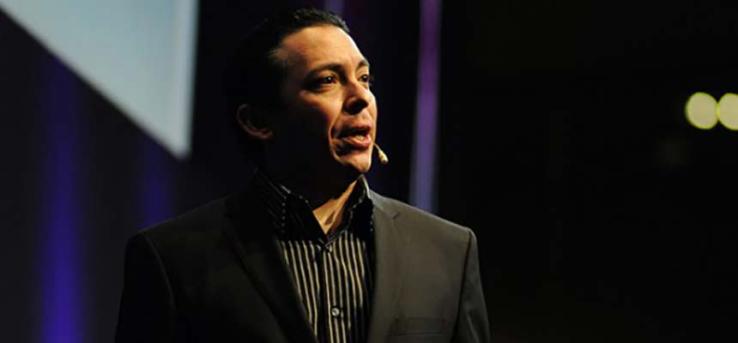We live in a customer-centric world where consumers increasingly want to experience things – whether that’s in-store or online. Meaningful experiences will shape the success of tomorrow’s businesses. This book could be interpreted as a book for large organizations looking for marginal gains over competitors, however we can all learn from this book. If your customer service hasn’t been deliberately mapped and designed, you’re already behind the curve. This book is a comprehensive ‘step by step’ guide to achieving world-class customer experience. It took Brian 2 years to write and produce and I read this book 3 times over and over when I first bought it. It’s a modern business “must-read.”
USA Today: Snapchat’s Spectacles expected to be big hit
Spectacles, which he predicts will be “on everyone’s Christmas list,” are “a pair of sunglasses with wifi, a camera and the ability to share memories,” he says.
TechCrunch: Brian Solis talks about why AI won’t suck
This week I got the chance to talk to a private hero of mine, Brian Solis. Solis is a digital analyst and speaker who talks about the future and how big brands – Coke, IBM – will interact with humans. His new book X is out now and it’s designed to help big companies survive the changing tides of business and tech.
Mashable: The top 50 marketing influencers on Snapchat (that aren’t DJ Khaled)
@briansolis — With one of the top marketing blogs in the world, Brian Solis also works as a digital analyst, anthropologist, and futurist. He is a principal analyst at Altimeter Group as well as award-winning author and keynote speaker. Brian has helped many brands and celebrities undertake digital transformation to more effectively market themselves.
Marketing & More: Royale les — website nodig in ecosysteem aan digitale touchpoints?
by: Marketing & More [Excerpt] Royale les: website nodig in ecosysteem aan digitale touchpoints? We zijn eerlijk gezegd niet zo’n grote fan van de monarchie. Maar je hoeft niet altijd fan van iets te zijn om er vak-gerelateerde lessen uit te trekken. Zo is het maar net met Trump of de N-VA. Je hoeft het niet met hen eens te zijn om in te zien dat ze vanuit marketing-standpunt best boeiend om volgen zijn. Eerder deze maand passeerde een opmerkelijk bericht…
Search Strategy Marketing: Google’s Micro-Moments — Why They’re Important to CMOs
According to Brian Solis, in a recent interview with Advertising Age, there are ten best practices for marketers to adhere to in order to effectively compete for the all-important micro-moments. The first practice is to “identify key micro-moments and what happens in them: why, where, and how people search for information.”
Reuters: Uber aims to win Japan’s heart through its stomach
“Uber believes Japan is an important market, and if it can demonstrate success in Japan, it can go into other Asian countries with momentum,” said Brian Solis, digital analyst at Altimeter Group in San Francisco.
CIO Review: How social media is shaping the 2016 presidential election
Social media gives people the power to organize and inform, but it’s also frequently used to exhibit narcissism and ignorance, according to Brian Solis, principal analyst at Altimeter Group, a research and advisory firm. Such behavior reflects the uglier side of political discourse, he says.
NEXT: NEXT16 — Brian Solis on experience, feelings and innovation
We’re creating an egosystem – it’s teaching us that we’re centre of the universe. That’s why we feel bad when something we share on Facebook doesn’t get likes. It turns us into accidental narcissists. And we’re also becoming digital introverts. It’s becoming hard for us to call someone. No-one looks forwards to calling customer service.
Acquisa: Interview mit Brian Solis, “There is an Uber in every business”
Customer Experience (CX) is a difficult process, because so many stakeholders interpret CX differently and then prioritize investments and resources accordingly. The IT-Department thinks it’s about technology. The Marketing-Department thinks it’s about omnichannel. The department customer service focuses on contact touchpoints. The Advertising-Department activates experiential events and campaigns. And the executives ask for customer data and make decisions based on narrow inputs and more so cognitive biases.











